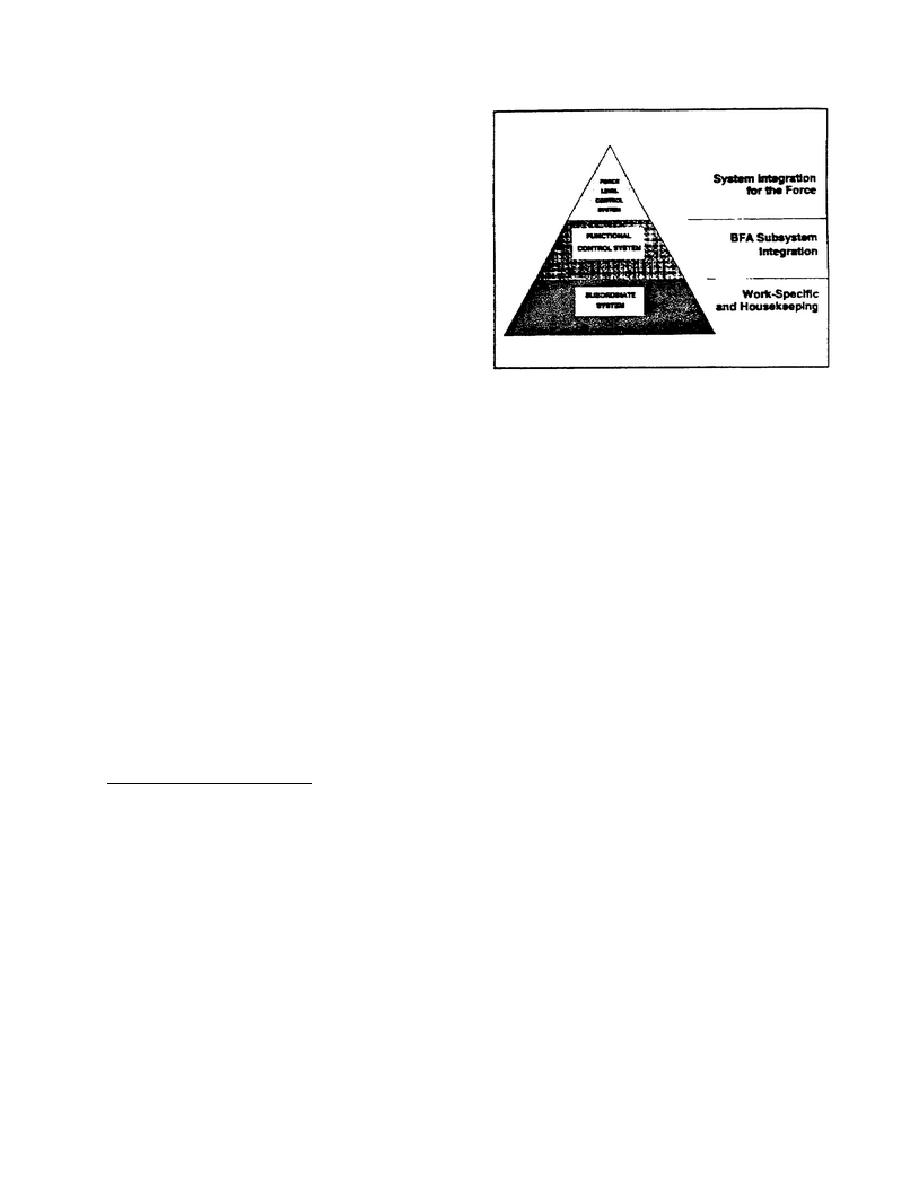
c. The C2S2 vertical architecture
partitions Army tactical command and control
into three classes of interconnected subsystems
(Figure 4-1): the force level control system
(command),
functional
control
systems
(control), and subordinate systems. The force
level control system integrates information
across all five control systems; each functional
control system integrates information from the
subordinate systems to permit the functional
commander (e.g., DIVARTY Commander) to
perform his internal C2 of functional units. The
subordinate systems perform detailed work
Figure 4-1. C2S2 vertical architecture
peculiar to the system (e.g., intelligence sensor).
d. Force Level Control System (FLCS).
(1) This system is composed of the commander and staff at each Army echelon (e.g., Corps,
Division) and their facilities, personnel, procedures, communications, automation, etc. (Figure 4-2, page
4-4).
(2) The FLCS provides the C2 means for the commander and staff at each echelon and the
means of coordination among the BFA at each echelon. Specifically, its functions are to facilitate
decisions regarding the employment and sustainment of combat power, directions to subordinate and
support units, and coordination across the BFA at each force echelon.
(3) The FLCS is a netted, distributed system which permits the force level commander to
command and control from any of his echelon's command posts, from the operational facilities at the
subordinate functional control nodes (such as the DIVARITY CP), or from command posts at the next
lower echelon. The FLCS develops an integrated combined arms and services concept of operation for
the AirLand Force (ALF).
4. Functional Control Systems. The functional control systems support the FLCS by collecting data
from the five functional segments and structuring them into meaningful information for the force
commander and his staff. The functional control systems also support the FLCS by disseminating
guidance and direction from the commander and his staff, and by coordinating across BFA lines (e.g.,
DIVARTY to DISCOM).
4-3
SS0117



 Previous Page
Previous Page
